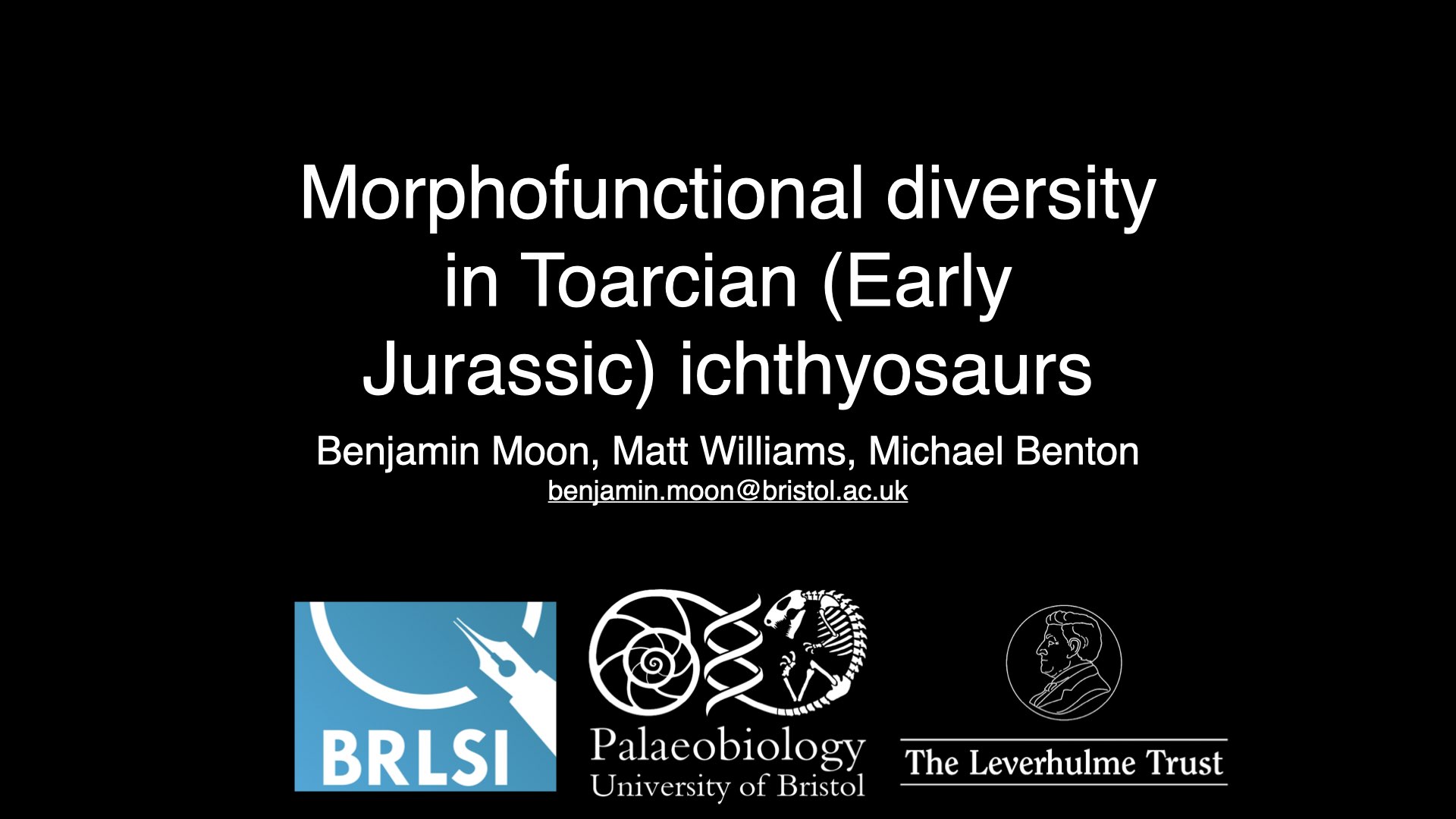Morphofunctional diversity in Toarcian (Early Jurassic) ichthyosaurs
Moon, B.C., Benton, M.J., & Williams, M. 2017 Morphofunctional diversity in Toarcian (Early Jurassic) ichthyosaurs. SVP 77th Annual Meeting 2017 (Calgary, Alberta)
This was my second presentation at a Society of Vertebrate Paleontology conference, after Berlin in 2014, although this one will probably stick in my memory more as I had a large trip across Canada – Vancouver, Calgary, Toronto – around the conference itself.

My talk here presented ongoing work related to the Strawberry Bank lagerstätte in the UK and some of the three-dimensional material that I CT scanned and have segmented – alongside interns and students who had helped me along this way. I also showed some preliminary reconstructions of the muscle attachments points for the jaw adductor chambers.
Abstract
The Early Jurassic had the highest raw diversity of ichthyosaur taxa in the Mesozoic, yet not the highest disparity or ecological variation. Two great lagerstätten – the Lias Group and Posidonia Shale – have preserved abundant specimens representing this diversity, but three-dimensional specimens are rare. Morphological differences in the ichthyosaur taxa present at this time have been noted, but testing of ecological adaptation and niche occupation has heretofore been infrequent. We use micro-CT scans of two highly complete, three-dimensionally preserved ichthyosaur skulls from the Upper Lias (Toarcian) Strawberry Bank lagerstätte of Somerset, U.K. – referred to Hauffiopteryx typicus and Stenopterygius triscissus respectively – to reconstruct the internal cranial hard and soft anatomy. Hauffiopteryx typicus possesses a narrow, elongate snout and jaw, and anteroposteriorly short postorbital region and supratemporal fenestra – comparable to coeval Leptonectidae. The adductor cavity is large, providing broad areas for muscle attachment. In Stenopterygius triscissus the snout is broader and more robust, and the postorbital region is longer and supratemporal fenestra larger than in H. typicus – as in other Thunnosauria. A feature of Neoichthyosauria is the posterior position of the paracoronoid process on the surangular, close to the jaw articulation. We find this – coupled with extensive muscle attachment in this region – gives a high moment arm on the lower jaw, allowing the jaw to be closed rapidly even in the viscous medium of water. The teeth of S. triscissus are longer and greater in diameter than in H. typicus, and retained in both taxa through ontogeny. We suggest that these morphologies evidence niche partitioning between the taxa. No direct evidence of diet was found in the specimens, but the lagerstätte preserves numerous fishes and insects of small to large size. The deposit has been interpreted as a ‘nursery’ for ichthyosaurs. The similarity of the snout and tooth morphological in H. typicus and the crocodyliform Pelagosaurus typus may indicate similar feeding strategies.
